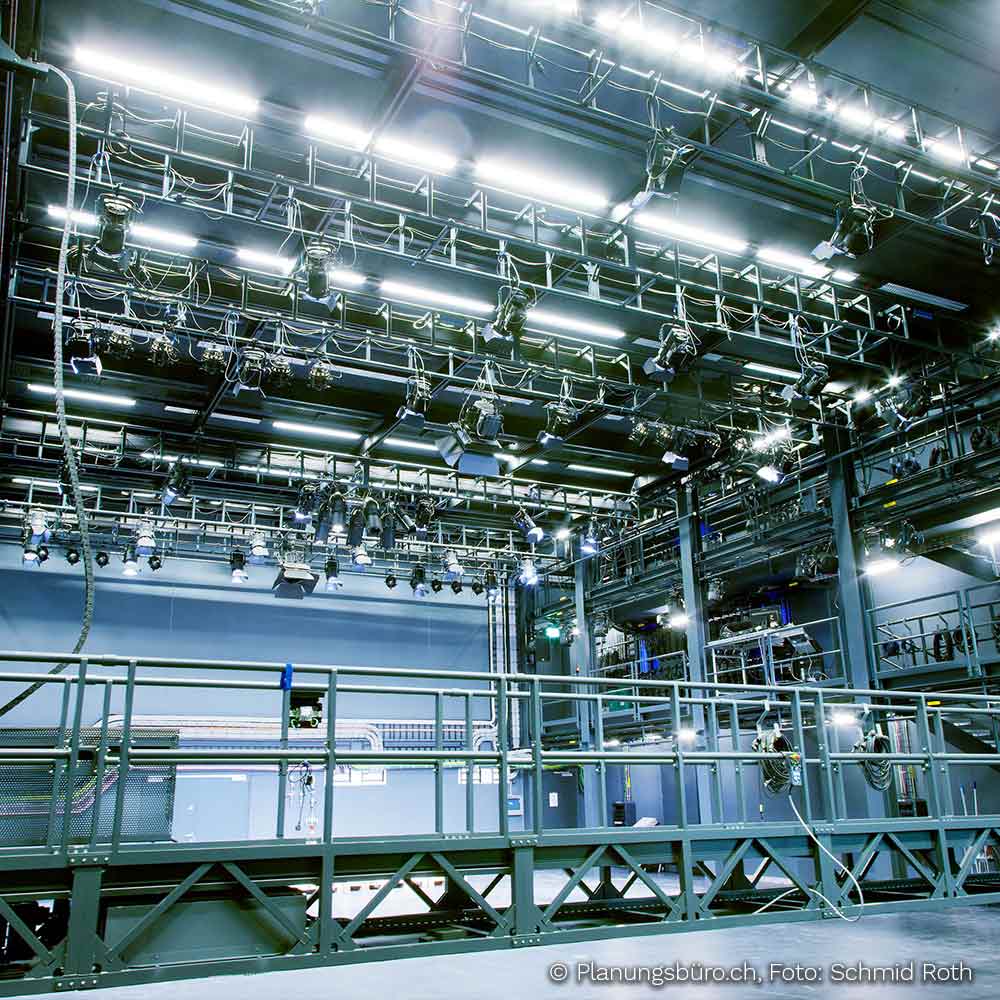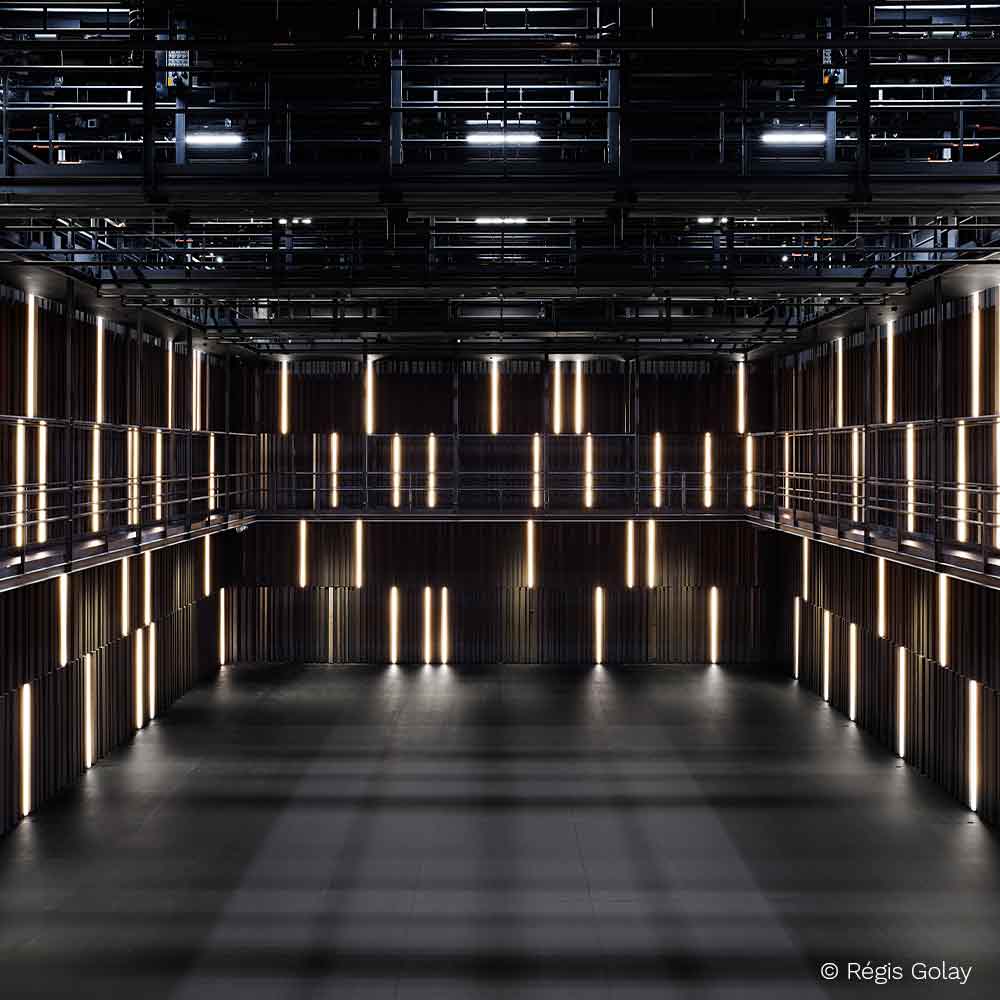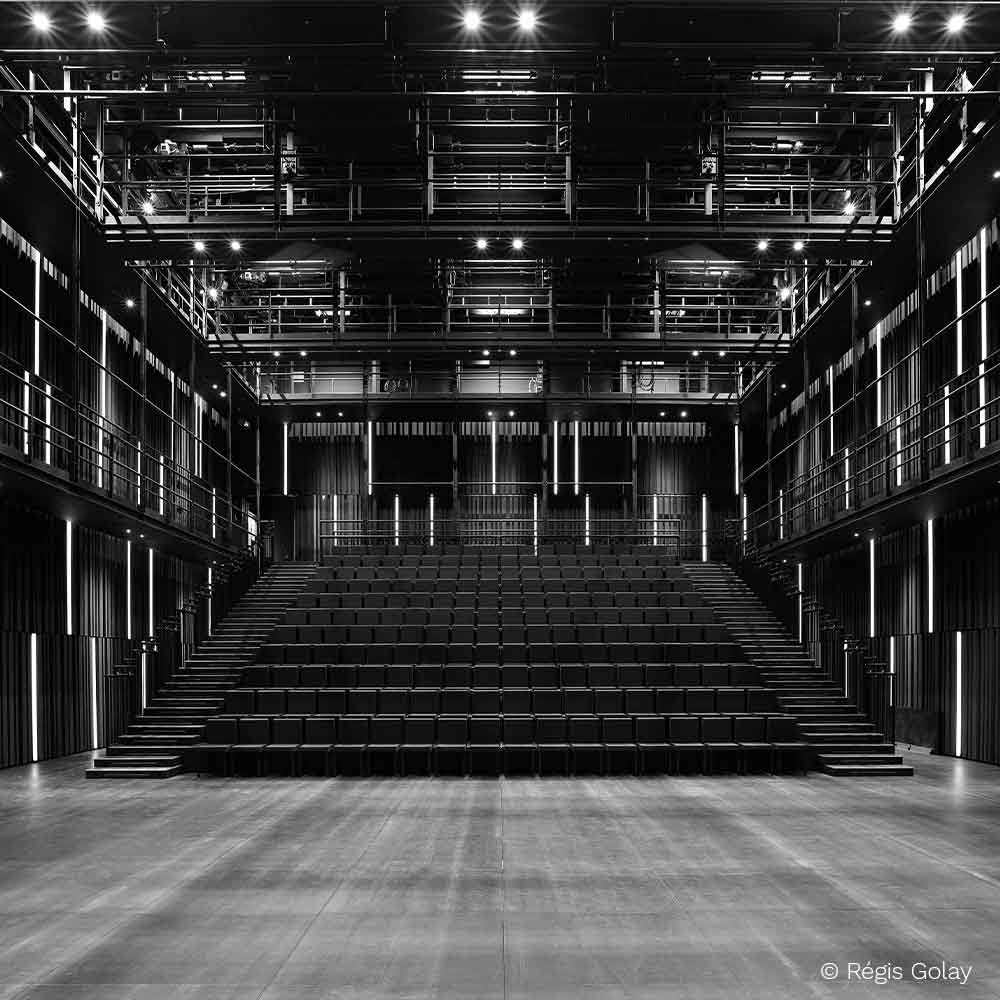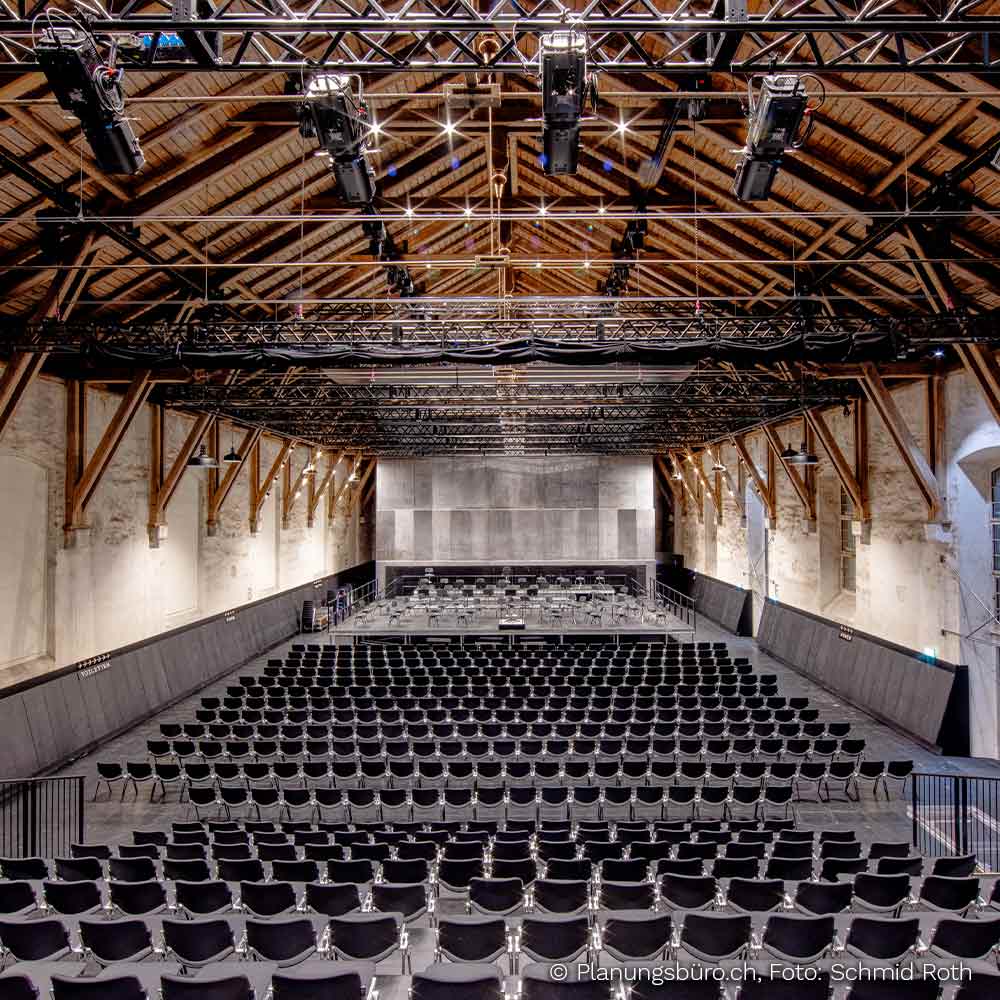DEFINITION, LOCATIONS AND TECHNICAL ASPECTS
Flexibility thanks to modular rooms and modern stage technology – Black Box Theater can be used in a variety of ways for theater, dance, and concerts and is suitable for both large and small audiences. But what exactly is a Black Box Theater? Where is Black Box Theater usually used? How does it differ from conventional theater, and what products and technical aspects are necessary?
We at HOAC® company can look back on a long history as a family company in the sector welding technology and stage construction in the theater. We stand for high-quality products that combine motivation and perfection. Innovative theater technology is our passion – which is why we answer all your questions about Black Box Theaters competently and clearly in this article.

INDEX OF CONTENTS
The most important facts in brief
What is a black box theater?
Where is black box theater used?
Black box theater vs. traditional theater: What are the differences?
Technical aspects and products
Black Box Theater – flexible solution with a wide range of applications meets HOAC® quality
THE MOST IMPORTANT FACTS IN BRIEF
- Black box theaters are flexible performance spaces with a comparatively simple structure. On the one hand, they enable proximity to the audience and, on the other, can be adapted to different performances.
- Black box theaters are used in small and alternative venues, but also in theaters that are located away from the main stage.
- Suitable products such as mobile grandstands, stages, and trusses are indispensable for using black box theaters in all their diversity – HOAC® is an experienced and trustworthy partner for this.

WHAT IS A BLACK BOX THEATER?
A black box theater is a flexible performance space that is characterized by a square or rectangular shape, as well as a comparatively low ceiling and a flat floor. As the structure of a black box theater is comparatively simple, it is very versatile in use. Basically, anything the director has in mind can be staged in a black box theater. The adaptable stage design allows for a variety of shows, from theater to musical performances or even smaller arts events.
A black box theater creates a special intimacy between performers and the audience. On one hand, this allows the audience to be emotionally very close to a play, and on the other, it enhances the performers’ connection with the audience, offering a more intense experience. The director has the freedom to adjust the view of the space, providing a unique angle for every performance and giving the audience a fresh perspective on the stage.
Black box theater has its origins in the American avant-garde of the 20th century. An experimental part of the theater movement questioned conventions on all possible levels, including within the theater. This led to the idea of flexible staging spaces, removing the rigid seatplan of classical theaters. In the 1960s, black box theaters gained popularity as rehearsal spaces, especially for avant-garde arts projects.
WHERE ARE BLACK BOX THEATERS USED?
Black box theaters are still very popular today and are primarily associated with concerts and theater performances. They are used in small venues such as art galleries or as improvised rooms in special locations like industrial buildings. These locations often have an alternative atmosphere that black box theaters amplify. The emotionality of a performance or its experimental character is further heightened when staged in a black box theater.
Universities and schools often utilize black box theaters. The flexibility of stage set-up not only allows for diverse performances but also provides space for educational work in the arts. This educational focus allows students to explore creative expressions in acting, directing, and stage technology. It makes black box theaters a vital part of modern performance arts education, offering a practical and adaptable platform for young talent.
Black box theaters are also used as secondary performance spaces in classical theaters. While the main stage may cater to larger productions with complex stage setups, black box theaters are a great way to showcase smaller performances or shows where proximity to the audience is key.
From a creative view, black box theaters allow performers to experiment with unconventional staging concepts. Whether the audience surrounds the performance space, or the view is restricted to one perspective, this adaptability adds to the charm and innovation of black box theaters. Directors and artists have the freedom to design every detail, from lighting to seating, to provide a tailored view for each audience member.
Black box theaters also provide opportunities for smaller musical acts, including band performances or intimate orchestra productions. Thanks to portable and adaptable equipment, these spaces can accommodate many kinds of entertainment events, from workshops to experimental theater pieces.

BLACK BOX THEATER VS. CLASSICAL THEATER: WHAT ARE THE DIFFERENCES?
There are clear differences between a Black Box Theater and the classical form of theater. Classical theaters are often larger and have fixed components, for example:
- Platform
- Upper machinery with hoists
- Lifting platforms
- Orchestra pit
- Lighting equipment
- Sound engineering
- Seating arrangement
In contrast, many of these factors are flexible in a black box theater. The seating arrangement can be adapted depending on the performance, and there is no strict separation between the stage and audience. Mobile equipment, like modular risers, portable seating, and sound systems, allow directors to customize the performance space. This adaptable nature gives black box theaters their experimental charm and alternative character, providing a different view of the performance.

TECHNICAL ASPECTS AND PRODUCTS
Although black box theaters are considered flexible and cost-effective, a basic stock of mobile equipment must be available. The requirements for these products are quite high. But once you have made a careful and high-quality selection, there are many possibilities with the Black Box Theater.
If you want to use a black box theater, you have to think about things like sound, lighting, and safety aspects such as fire protection. Products such as risers, mobile stages, and trusses are also essential for a black box theater – these are also products that are at the heart of HOAC®.
- Mobile Grandstands
- Mobile Stages
- Trusses
BLACK BOX THEATER – FLEXIBLE SOLUTION WITH A WIDE RANGE OF APPLICATIONS MEETS HOAC® QUALITY
Black Box Theaters are flexible performance spaces with an alternative and experimental character. They can be used in a variety of ways, for example for theater performances or orchestras. Black box theaters are often used in small and alternative venues. One of the special features of black box theaters is the close proximity between performers and audience, creating a unique emotional experience.
To take full advantage of a Black Box Theater, certain technical aspects must be met, and suitable products must be available. Mobile, modular stands and stages that can be set up and dismantled quickly are ideal for black box theaters. HOAC® offers you these and other products in high quality, tested for safety, and contributes to the adaptable equipment of your Black Box Theater.
Are you interested in stage technology? Then you might also be interested in our articles on more sustainability in the theater and on mobile concert rooms. Are you interested in our products or would you like some advice? Then contact us – you are very welcome here.